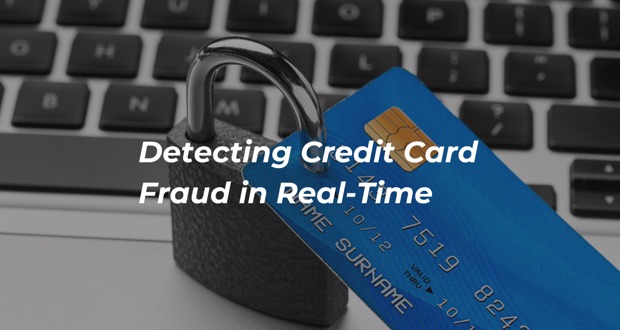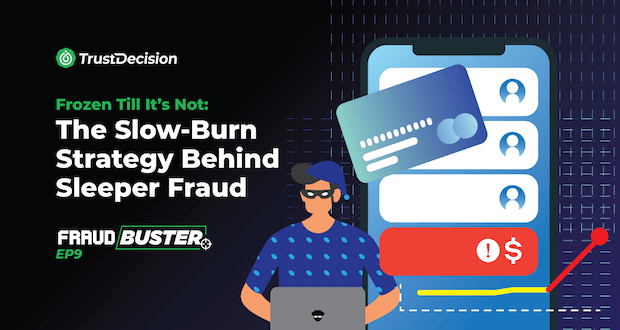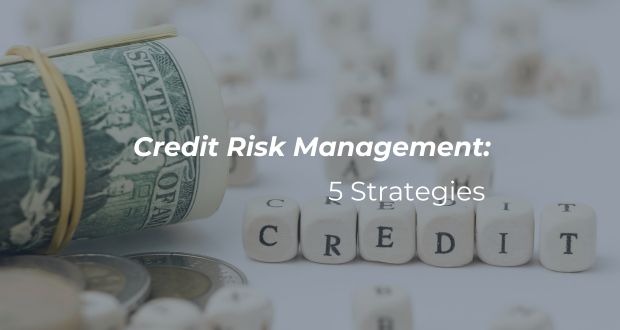Understanding Credit Card Fraud
Types of Credit Card Fraud Detection
1. Card-present (CP) fraud: Card-present fraud occurs when the physical credit card is used at a point-of-sale terminal. This type of fraud often involves stolen or counterfeit cards. Utilizing EMV chip technology and real-time transaction monitoring can help in detecting credit card fraud at the point of sale. Credit card validators can also play a crucial role in verifying the authenticity of the card.
2. Card-not-present (CNP) fraud: CNP fraud happens when the cardholder is not physically present during the transaction, such as in online purchases. This type of fraud is particularly challenging to detect due to the lack of physical verification. Implementing multi-factor authentication, using credit card checkers, and employing credit card fraud detection using deep learning algorithms can significantly reduce the risk of CNP fraud.
3. Friendly fraud: Also known as chargeback fraud, occurs when a consumer makes an online purchase with their credit card and then requests a chargeback from the issuing bank after receiving the goods or services. The consumer may falsely claim that the transaction was unauthorized, that the product was never received, or that the product received was not as described. This type of fraud is termed "friendly" because it is perpetrated by the legitimate cardholder rather than an external fraudster.
4. Account takeover: Fraudsters gain unauthorized access to a victim's account, often through phishing or other social engineering tactics, and use it to make fraudulent transactions. Monitoring for unusual login activities, implementing strong password policies, and using real-time alerts can help in detecting and preventing account takeovers.
Detecting Identity Theft
Common methods used by fraudsters:
Fraudsters employ various methods to steal personal information, with phishing being one of the most common tactics. In phishing schemes, deceptive emails or messages are sent to trick individuals into providing sensitive information, such as passwords or credit card numbers. Another prevalent method is through data breaches, where cybercriminals hack into databases to steal vast amounts of sensitive information. Social engineering is also a favored technique, where fraudsters manipulate individuals into divulging confidential information through psychological tactics. Additionally, credit card checker tools are often used by fraudsters to validate stolen card information before making fraudulent transactions.
Importance of early detection in preventing identity theft:
The importance of early detection in preventing identity theft cannot be overstated. Financially, early detection can prevent significant losses for both consumers and businesses. For businesses, the stakes are even higher as failing to detect identity theft promptly can lead to severe reputational damage, resulting in a loss of customer trust and loyalty. Employing advanced technologies is essential in this fight against fraud. Techniques such as credit card fraud detection using deep learning and real-time monitoring systems can significantly aid in early detection. These technologies analyze vast amounts of data to identify suspicious activities and anomalies, enabling a quick response to potential threats. By understanding the various types of credit card fraud detection and the methods used for detecting identity theft, businesses can implement more effective strategies to protect themselves and their customers from fraud.
By understanding the various types of credit card fraud detection and the methods used for detecting identity theft, businesses can implement more effective strategies to protect themselves and their customers from fraud.
Technological Innovations in Real-Time Fraud Detection
Credit Card Fraud Detection Using Deep Learning
Deep learning algorithms have revolutionized the landscape of credit card fraud detection by significantly enhancing the capabilities of fraud detection systems. One of the primary advantages of deep learning is its advanced pattern recognition abilities. These algorithms excel at identifying complex patterns and anomalies within large datasets, which is crucial for detecting credit card fraud. Traditional methods might overlook subtle irregularities, but deep learning systems can identify suspicious activities that would otherwise go unnoticed.
Another key feature of deep learning algorithms is their capacity for continuous learning. These systems adapt and improve over time by learning from new data. As fraud tactics evolve, the detection system becomes increasingly adept at identifying them, thereby maintaining its effectiveness. This continuous learning process ensures that the system remains up-to-date with the latest fraud strategies, providing a robust defense against emerging threats.
Real-time analysis is another significant benefit of deep learning models. These algorithms can process transactions instantaneously, providing immediate alerts for potentially fraudulent activities. This rapid response is essential for mitigating financial losses and preventing further fraud. For instance, financial institutions like JPMorgan Chase have integrated deep learning into their fraud detection systems, resulting in a significant reduction in fraudulent activities. Similarly, e-commerce platforms like Amazon and payment processors like PayPal use deep learning to monitor transactions and detect card-not-present (CNP) fraud, thereby protecting both merchants and consumers.
Credit Card Validator and Credit Card Checker Tools
Credit card validators play a crucial role in verifying the authenticity of card details, ensuring that transactions are legitimate. The verification process involves checking the card number against the Luhn algorithm, validating the expiration date, and confirming the CVV code. This multi-step process helps prevent the use of counterfeit or stolen cards, particularly in card-present transactions where physical verification is possible. By integrating credit card validators with broader fraud detection systems, businesses can add an extra layer of security, ensuring that only legitimate cards are processed and thereby reducing the risk of fraud.
Credit card checkers further enhance fraud detection by analyzing transaction data to identify suspicious activities. These tools scrutinize patterns such as unusual spending behavior, transactions from high-risk locations, and multiple transactions within a short period. By providing real-time alerts for potentially fraudulent transactions, credit card checkers enable businesses to take immediate action, which is crucial for preventing financial losses and protecting customer accounts. Additionally, these tools often incorporate enhanced security measures like multi-factor authentication and geolocation tracking, adding extra layers of protection and making it more difficult for fraudsters to succeed.
By leveraging technological innovations such as deep learning algorithms, credit card validators, and credit card checkers, businesses can significantly enhance their real-time fraud detection capabilities. These advanced tools and technologies provide robust defenses against various types of credit card fraud, ensuring greater security for both businesses and consumers.
Proactive Strategies for Detecting Credit Card Fraud
Using behavioral patterns to detect anomalies
Behavioral Analysis: Behavioral analytics involves monitoring and analyzing user behavior to detect anomalies that may indicate fraudulent activities. By understanding typical user behavior, such as spending patterns and transaction locations, businesses can identify deviations that suggest fraud.
Anomaly Detection: Machine learning models can be trained to recognize normal behavior and flag any deviations as potential fraud. For example, if a credit card is suddenly used in a different country or for unusually large purchases, the system can trigger an alert.
Real-Time Monitoring: Implementing real-time monitoring systems that leverage behavioral analytics allows for immediate detection and response to suspicious activities. This proactive approach is essential for detecting credit card fraud and preventing financial losses.
Machine learning models for continuous improvement in fraud detection
Adaptive Learning: Machine learning models continuously learn and adapt from new data, improving their accuracy over time. This means that as fraud tactics evolve, the detection system becomes more adept at identifying them.
Predictive Analytics: These models use historical data to predict future fraudulent activities. By analyzing past fraud patterns, machine learning algorithms can identify potential threats before they occur.
Integration with Other Tools: Machine learning models can be integrated with other fraud detection tools, such as credit card checkers and credit card validators, to provide a comprehensive defense against various types of credit card fraud.
Leveraging big data to identify fraud trends and patterns
Data Aggregation: Big data analytics involves aggregating and analyzing large datasets to uncover trends and patterns associated with fraud. This includes transaction data, user behavior, and external data sources such as social media and public records.
Fraud Pattern Recognition: By analyzing vast amounts of data, big data analytics can identify patterns that may indicate fraudulent activities. For example, it can detect common characteristics of CNP fraud or identify trends in synthetic identity fraud.
Enhanced Decision-Making: The insights gained from big data analytics enable businesses to make informed decisions about fraud prevention strategies. This proactive approach helps in detecting credit card fraud more effectively.
Real-time data processing for immediate fraud detection
Instant Analysis: Real-time data processing allows businesses to analyze transactions as they occur, providing immediate insights into potential fraud. This rapid analysis is crucial for detecting credit card fraud and preventing unauthorized transactions.
Immediate Response: With real-time data processing, businesses can respond to suspicious activities instantly. This includes blocking transactions, alerting customers, and initiating further investigations.
Scalability: Real-time data processing systems are scalable, allowing businesses to handle large volumes of transactions without compromising on speed or accuracy. This is particularly important for high-transaction environments such as e-commerce platforms.
By adopting proactive strategies such as behavioral analytics, machine learning, and big data analytics, businesses can significantly enhance their ability to detect credit card fraud. These approaches provide robust defenses against various types of credit card fraud detection, ensuring greater security for both businesses and consumers.
Tools for Immediate Response
Real-Time Monitoring Systems
Real-time monitoring systems are indispensable tools in the fight against credit card fraud, providing continuous surveillance of transactions and user activities. This constant vigilance is crucial for detecting fraudulent activities as they occur, allowing businesses to intervene immediately. The ability to instantly identify suspicious activities, such as unusual spending patterns or transactions originating from high-risk locations, enables businesses to take swift action to prevent fraud. The scalability of real-time monitoring systems makes them suitable for businesses of all sizes, from small enterprises to large financial institutions, ensuring that they can handle large volumes of transactions without compromising on performance or accuracy.
Automated Alerts and Notifications
Automated alerts and notifications are another critical component of an effective fraud detection and response strategy. These systems provide instant notifications of suspicious activities, enabling businesses to respond quickly and mitigate the impact of fraud. The ability to customize alerts based on specific criteria, such as transaction amount, location, or user behavior, ensures that the alerts are relevant and actionable. This customization allows businesses to focus their resources on the most pressing threats, improving overall efficiency.
Automated alerts also enable businesses to take proactive measures before fraud can escalate. For instance, they can block suspicious transactions or contact customers for verification, thereby preventing potential losses. The integration of automated alert systems with existing security infrastructure creates a unified security framework, enhancing overall security and operational efficiency. This seamless integration allows for real-time data sharing between different security systems, ensuring that all relevant information is available for quick decision-making.
Enhanced coordination is another significant benefit of a unified security framework. By improving coordination between different departments, such as fraud prevention, customer service, and IT, businesses can ensure a cohesive response to fraud incidents. This coordinated approach not only improves the effectiveness of fraud detection and response but also enhances customer trust and satisfaction by demonstrating a commitment to security.
In summary, the integration of real-time monitoring systems and automated alerts into a unified security framework significantly enhances a business's ability to detect and respond to credit card fraud. These tools provide continuous surveillance, instant notifications, and proactive measures, ensuring that businesses can protect themselves and their customers from the ever-evolving threat of fraud.
TrustDecision's AI-Based Fraud Management
Advanced Analytics with Real-Time Data Integration
TrustDecision's solution leverages advanced analytics and real-time data integration to provide comprehensive fraud detection. By utilizing sophisticated data sources such as Know Your Customer (KYC++) protocols, the system can thoroughly analyze applicant data for signs of fraud.
Customized Risk Models
TrustDecision offers customized risk models tailored to specific industries. These models consider unique applicant characteristics, enhancing the accuracy of fraud detection and ensuring that the system is relevant to the business's needs.
Compliance Assurance
TrustDecision's solution incorporates Anti-Money Laundering (AML) and KYC checks to ensure regulatory compliance. This not only enhances security but also helps businesses meet legal requirements, reducing the risk of regulatory penalties.
By implementing tools such as real-time monitoring systems, automated alerts, and specialized solutions like TrustDecision's AI-based fraud management, businesses can significantly enhance their ability to respond to fraud immediately. These tools provide robust defenses against various types of credit card fraud, ensuring greater security and operational efficiency.
Conclusion
Real-time fraud detection is essential in today's digital landscape, enabling businesses to quickly identify and respond to fraudulent activities, thereby minimizing financial losses and protecting sensitive information. Advanced technologies such as deep learning, big data analytics, and behavioral analytics significantly enhance fraud detection capabilities, allowing for more accurate and timely identification of threats. Proactive strategies, including the use of credit card validators and automated alerts, further bolster a business's defense against fraud.
By prioritizing real-time fraud detection and leveraging technological innovations, businesses can significantly improve their ability to detect and respond to credit card fraud. TrustDecision's AI-based fraud management offers a robust solution for enhancing fraud detection capabilities and protecting business operations from fraudulent activities.






.png)







